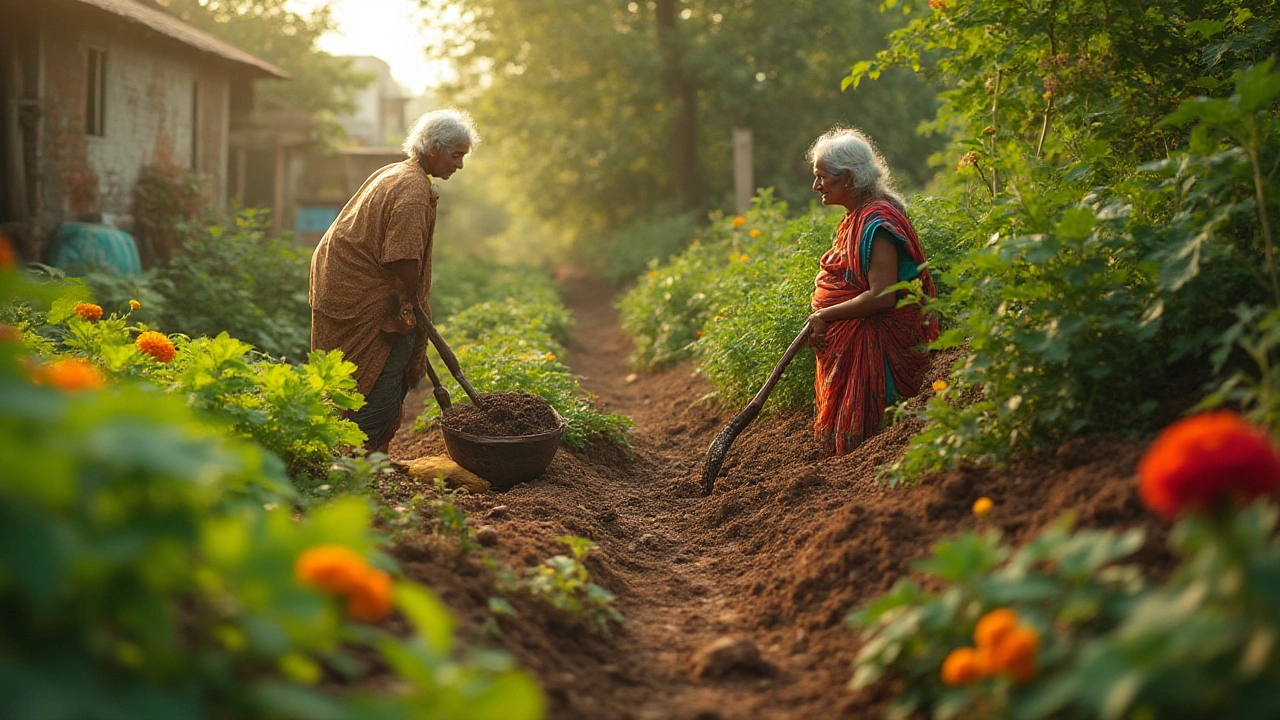No-till Gardening: Modern Soil Care Made Simple
When working with No-till gardening, a farming method that avoids turning the soil, preserving its natural layers and organisms. Also known as no‑till farming, it helps keep carbon in the ground, reduces erosion, and cuts down on labor.
One of the easiest ways to support no-till gardening is by adding Mulch, a protective layer of organic material placed on the soil surface. Mulch locks in moisture, suppresses weeds, and feeds the soil as it breaks down. By keeping the ground covered, mulch directly reduces the need for frequent digging, which aligns perfectly with the no‑till principle that "soil should stay undisturbed". This relationship creates a feedback loop: healthier soil holds more water, so you need less irrigation.
Water Management without the Dig
Pairing no‑till with Drip irrigation, a low‑pressure system that delivers water straight to plant roots, maximizes efficiency. Drip lines work under mulch, letting water seep directly where it’s needed while the mulch protects against evaporation. The combination "no‑till gardening requires drip irrigation" forms a clear semantic link: less soil disturbance means water can travel through intact pore spaces, reaching roots faster and with less waste.
Another cornerstone is Cover crops, fast‑growing plants grown primarily to protect and enrich the soil. Cover crops add organic matter, attract beneficial insects, and prevent erosion during off‑season periods. In a no‑till system, they act as a living mulch, reinforcing the idea that "no‑till gardening benefits from cover crops". This trio—no‑till, mulch, and cover crops—creates a resilient soil ecosystem that improves structure and nutrient cycling.
Beyond water and protection, no‑till dramatically boosts soil health, the overall condition of soil including its biology, chemistry, and physical properties. By avoiding regular plowing, you preserve mycorrhizal networks and earthworm tunnels, which enhance root penetration and nutrient uptake. Healthier soil means plants grow stronger, need fewer fertilizers, and can better resist pests. This relationship "soil health is enhanced by no‑till gardening" underscores why many sustainable growers adopt the method.
Ready to start? Begin with a light layer of straw or shredded leaves—about 2‑3 inches thick—spread evenly over your garden beds. Install a simple drip‑line system that runs parallel to the rows, and schedule watering early in the morning or late evening to reduce evaporation. Plant a mix of legumes and grasses as cover crops after your main harvest; they’ll fix nitrogen and protect the ground until the next planting season. Keep an eye on soil moisture with a probe or the finger test—if the top inch feels dry, it’s time to water.
Watch out for common slip‑ups: over‑watering can flood the mulch and smother roots, while neglecting weed control early on may let invasive species dominate. Also, avoid heavy machinery on wet soil; compaction reverses the benefits of no‑till. Regularly refresh the mulch layer as it decomposes, and rotate cover crop species to maintain a balanced nutrient profile.
Now that you understand how no‑till gardening ties together mulch, drip irrigation, cover crops, and soil health, you’re set to explore the deeper insights below. Below you’ll find practical tips, expert guides, and case studies that will help you apply these concepts to any garden, big or small.
Why No-Till Gardening: Benefits, Methods, and Tips for Richer Soil
Discover why no-till gardening is changing backyard gardens. Explore its real benefits, science, practical tips, and how to get started for lush results.
- manufacturing
- India
- food processing
- garden tips
- rice cultivation
- government schemes
- balcony garden
- urban gardening
- balcony gardening
- profitable business
- business ideas
- plastic manufacturing
- drip irrigation
- plant care
- steel manufacturing
- sustainable gardening
- startup ideas
- steel industry
- flower gardening
- textile manufacturers






